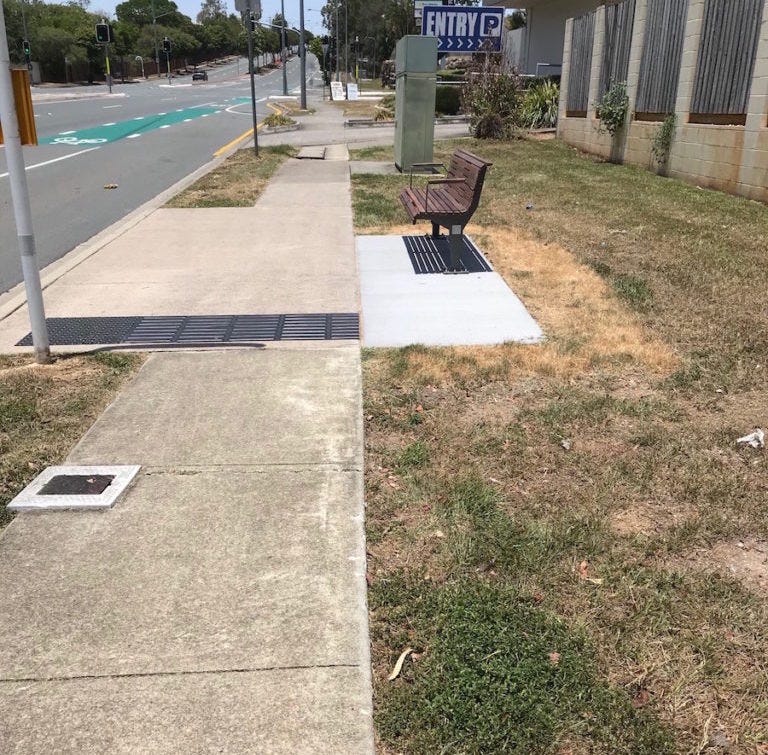Let's Talk about the Commons
If you wanted to find an example of the Garrett Hardin’s Tragedy of the Commons, it’s there in most urban streets and roads. But it doesn't have to be that way...
In Australia, we rarely talk about the commons. We talk about public meeting spaces like parks and community halls that we expect the government to maintain.
Many of what we think of as public meeting spaces are private, especially shopping malls and clubs that are only open to those who fit within the boundaries of a consumer with money to spend. They are not places where the homeless are welcome, nor teens who want to hang out with their friends, or children who aren’t sufficiently quiet and still.
Children’s playgrounds in parks and schools are where most of us learn about sharing common space and resources. It’s a messy business: learning to share, dominate, negotiate, concede, or co-operate. We learn about pecking orders, dominant and rival groups, bullying, inclusion and exclusion. Sometimes, an authority figure - a parent or teacher - watches and tells the children to play nicely. And behaviour might improve until their back is turned and the battles resume.
The public spaces of our cities, streets, and parks are a bigger grown-up version of the playground. It’s where residents, visitors, pedestrians, cyclists, visitors, drivers, people parking, the postie and delivery drivers, service workers and many others have equal rights to be in that space and go about their business. Again, we need to share, dominate, negotiate, concede, or co-operate.
We expect government, including local government, to maintain order in these spaces by enforcing laws and policies - on other people, at least.
These laws combine with cultural norms and social mores like fairness and respect. Everyone has an opinion of what is appropriate in public space and what crosses a shifting invisible line.
In most Australian suburbs, residents mow the grass on the verge, with a mix of pride, acceptance, or resentment. Even when residents maintain it, the verge remains public land where everyone has an equal right of access.
Our verges and streetscapes are also where disciplines and sectors (urban forests, urban planning, transport, landscape architecture, ecology, health, crime, social justice, accessibility, and so on) come crashing together.
That means lots of cultural and systemic issues.
That means lots of clashing uses, worldviews, and language.
That means a contentious space with a lot of potential for conflict.
However, that contention also means this space offers opportunities for change if we can learn to communicate and collaborate well.
And, if we can learn to collaborate on this local commons, we could use those same skills, habits, relationships, and networks, to collaborate on even bigger challenges, including our global commons.
The Tragedy of the Commons
In The Tragedy of the Commons, Harden describes the difficulty in keeping the balance between what’s good for the individual compared to what’s good for the many.
If you wanted to find an example, it’s there in most urban streets and roads.

One thing dominates – and that is cars. Vast areas are hard surfaces for driving and parking. Pedestrians are squeezed into narrow bands at the edges with the occasional street trees, gardens, and other services. Councils are trying to increase tree canopy and new street trees struggle in hostile environments. Nature and biodiversity barely get a look-in.
The “plant grass and nothing else” rules are examples of Hardin’s classic bureaucratic method of maintaining order. But what else can Councils do? While residents can generally be trusted to mow grass, allowing them to garden however they want on public land would lead to even greater conflicts with exploitation and appropriation of the space.
Claims of benevolence and inclusiveness from advocates for gardening in our streets often ignore all those who are deliberately or accidentally excluded from the space - including pedestrians of all ages and abilities.
The Nurturing of the Commons
But as others like Elinor Ostrom have shown since, it doesn’t have to be that way. Positive and localised solutions for stewardship of the commons are more complex – collective action, cooperation between many stakeholders, developing and enforcing rules to ensure that the commons is nurtured rather than depleted by selfishness or lack of care.
This is the work being done by people working within councils as they develop and review their verge garden policies. It is the basis of the Shady Lanes Project and its three guiding principles.
Local organisations are the key to bringing residents together for collective action to nurture our commons and create new cultural norms, in co-operation with councils, with localised group projects and collaborations. That’s how we create change at the scale and speed we need. More on how to run group verge gardening projects in this space and develop collaboration and advocacy skills in the process, is in the paid section here.
Related:

